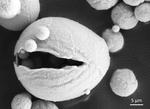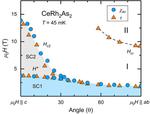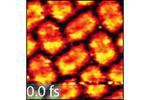Other

“Astronomers find rare Earth-mass rocky planet suitable for the search for signs of life A newly discovered exoplanet could be worth searching for signs of life. Analyses by a team led by astronomer Diana Kossakowski of the Max Planck Institute …

“In future it will be possible to incorporate data from deep space telescopes into the underlying atomic models with a high degree of reliability Very hot gas, as found in the sun’s corona or in close proximity to black …

“In the futuere the metal could store energy from renewable sources, for example for transportation Energy from sun or wind is weather-dependent and lacks an efficient way to store and transport it. Scientists from the Max-Planck-Institut für Eisenforschung and TU …

“Researchers discover an important clue as to what mechanism drives the solar wind Using observational data from the U.S. weather satellites GOES, a team of researchers led by the Max Planck Institute for Solar System Research (MPS) in Germany …

“An invention by researchers at the Max Planck Institute for Medical Research could make batteries much more energy dense, efficient and safer. The research team has found a way to produce very fine metal fleeces, the batene fleece, that can …

“Iron isotopes in samples from asteroid Ryugu suggest its origin to lie beyond the orbits of Jupiter and Saturn Astronomy Astrophysics Solar System The asteroid Ryugu likely formed at the outer edge of the Solar System beyond the orbits of …

“Researchers discover a hot spot near the black hole Sagittarius A* with the radio telescope ALMA There is a black hole in the centre of our Milky Way. In the immediate vicinity of this behemoth called Sagittarius A*, things are …

“The James-Webb-Telescope provides insights into the composition and formation of planets outside our solar system. Using the James Webb Space Telescope, an international collaboration of astronomers with Laura Kreidberg of the Max Planck Institute for Astronomy has captured infrared light …

“Observations reveal the angle dependence of the magnetic field needed to suppress superconductivity in CeRh2As2. Uniquely, the behavior of “odd parity” superconductors is revealed. Superconductivity is a fascinating state of matter in which an electrical current can flow without any …

“An ultra-fast microscope combines atomic spatial and temporal resolution and thus enables unprecedented insights into the dynamics of electrons in molecules In order to better understand (and possibly control) fast chemical reactions, it is necessary to study the behaviour of …
